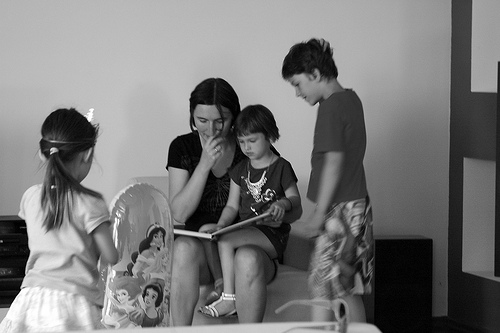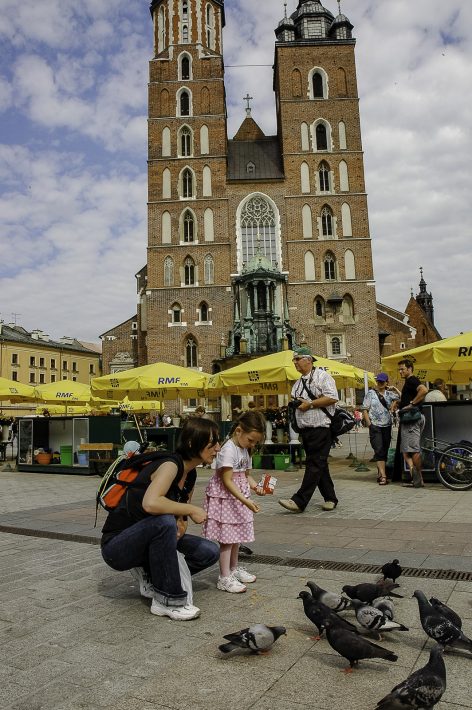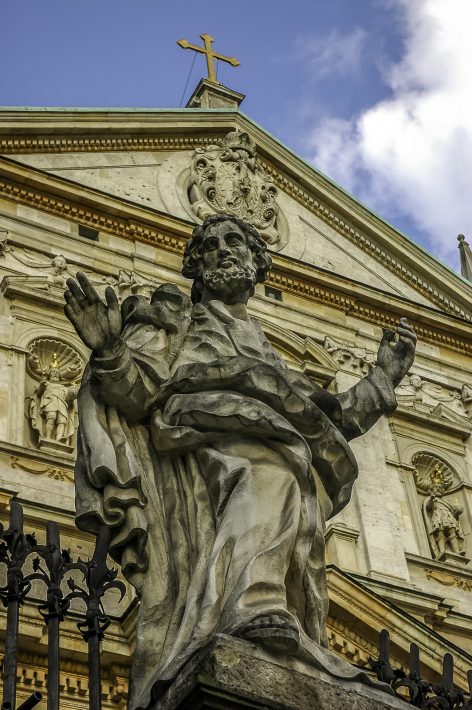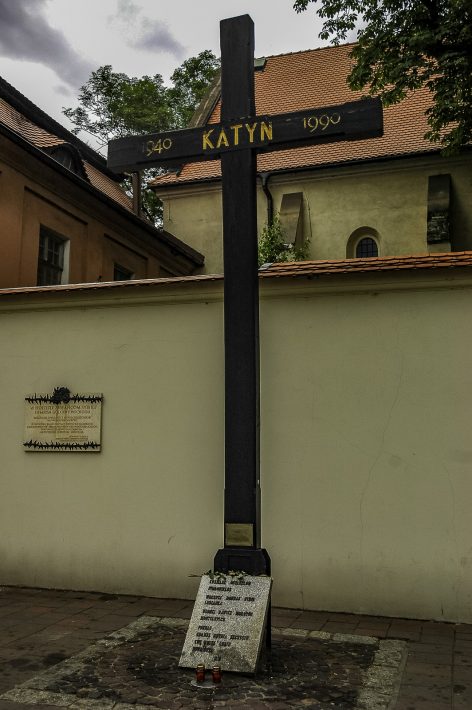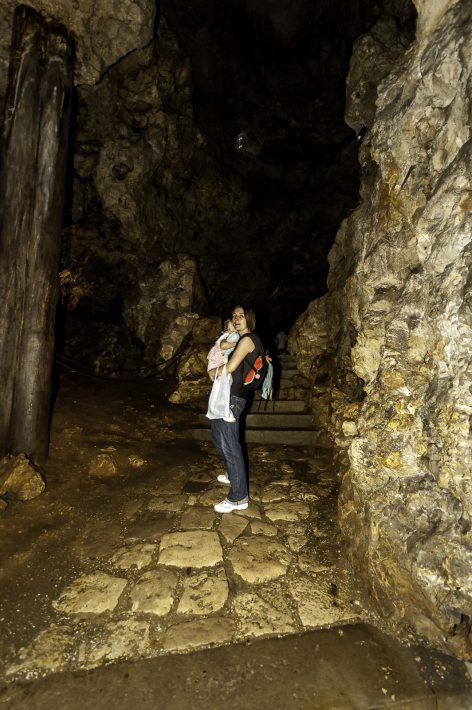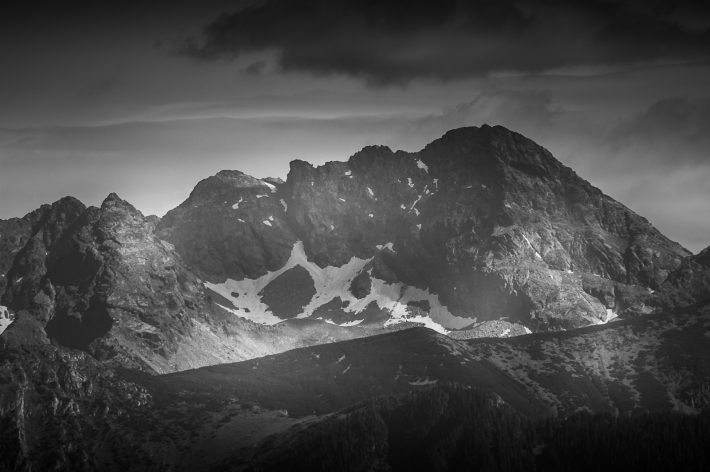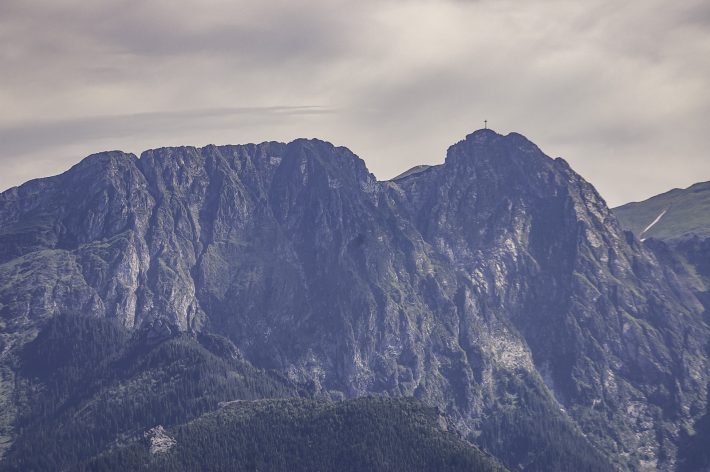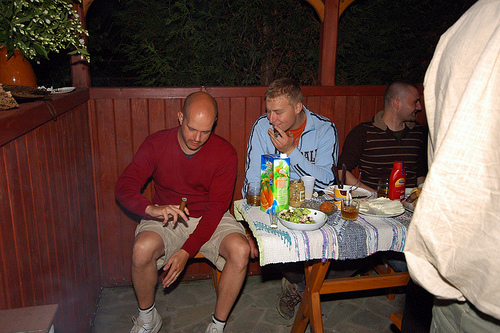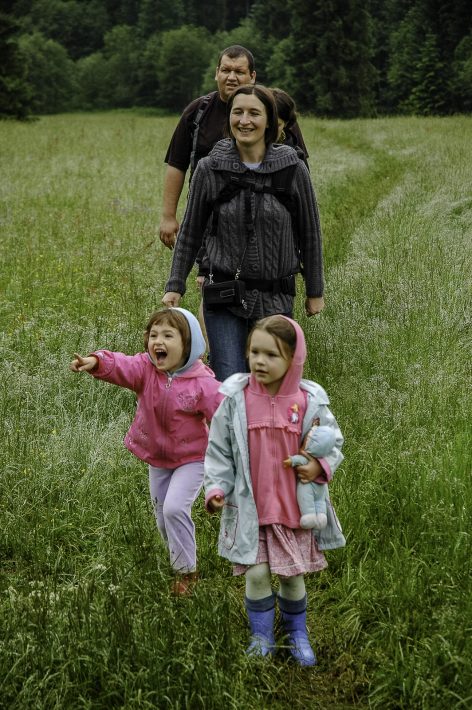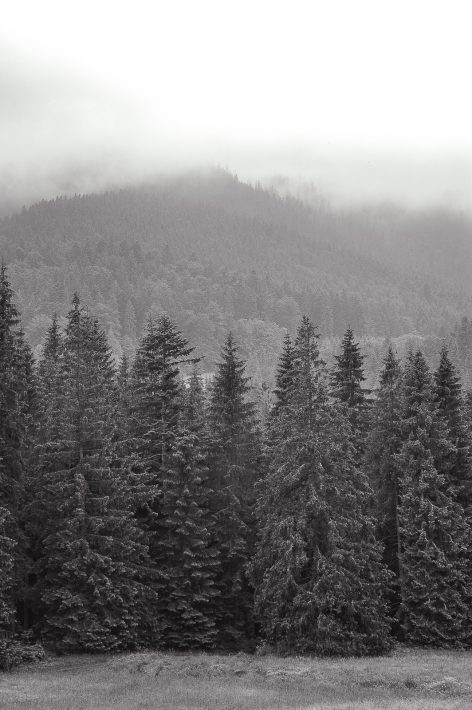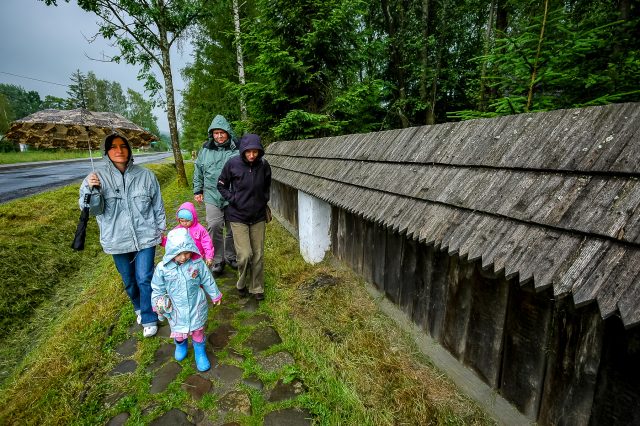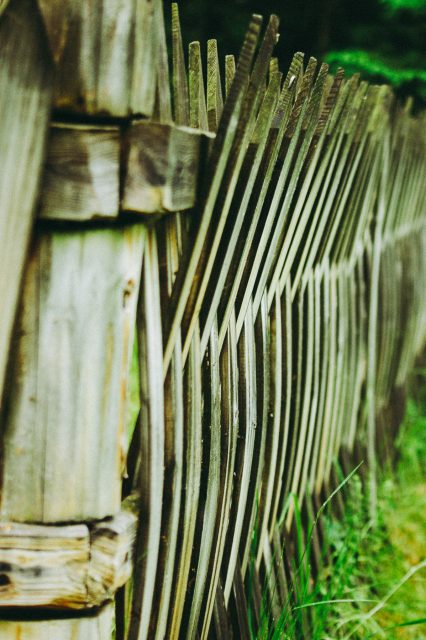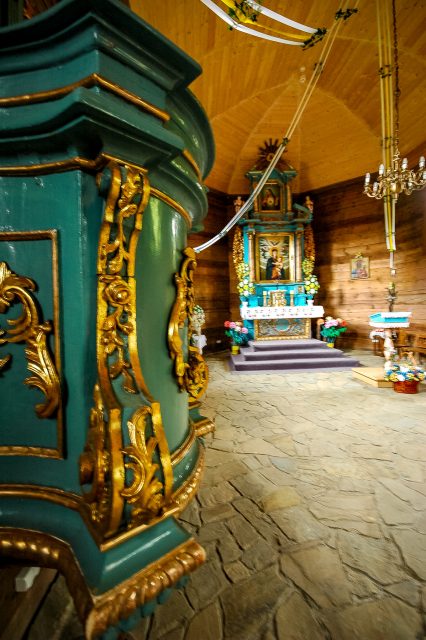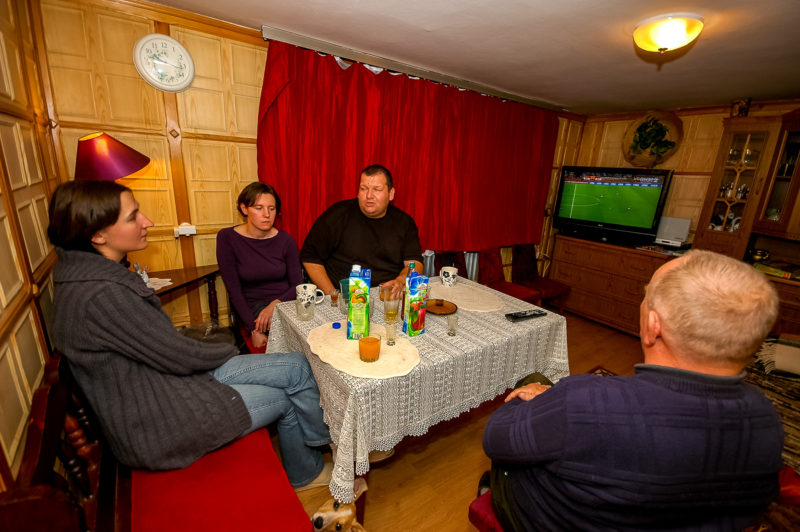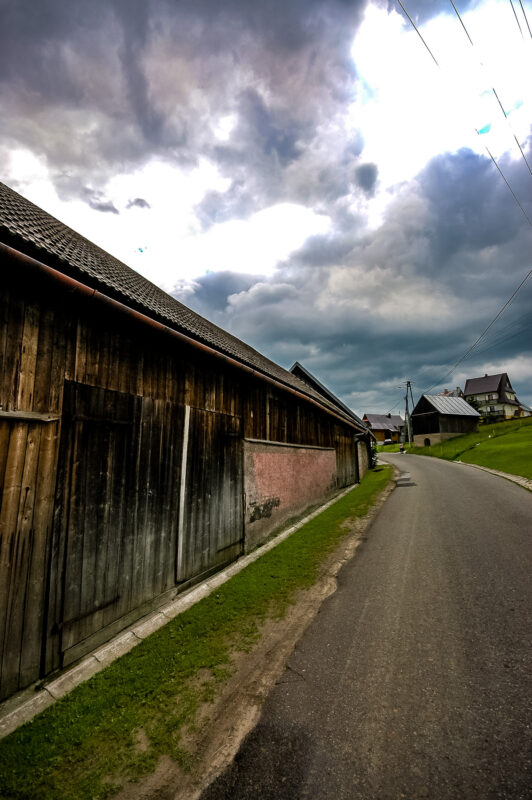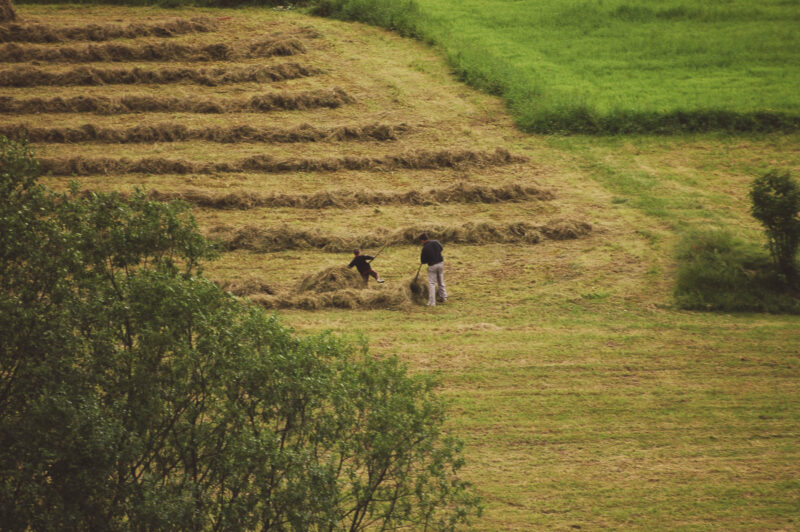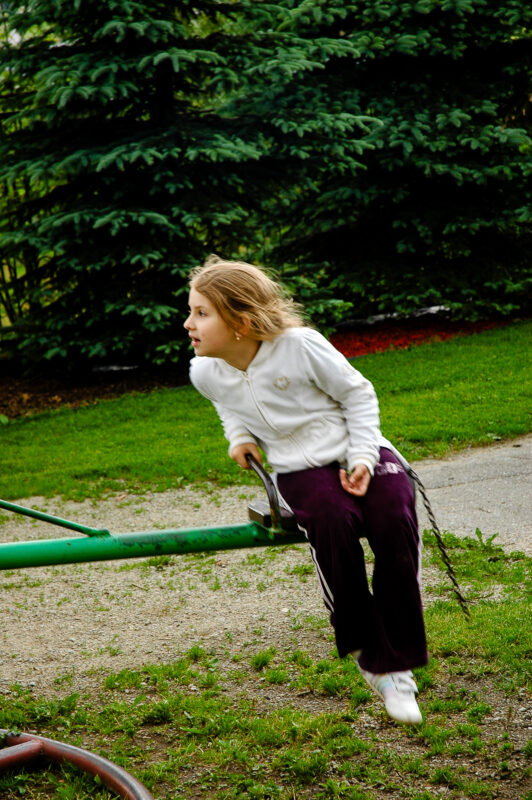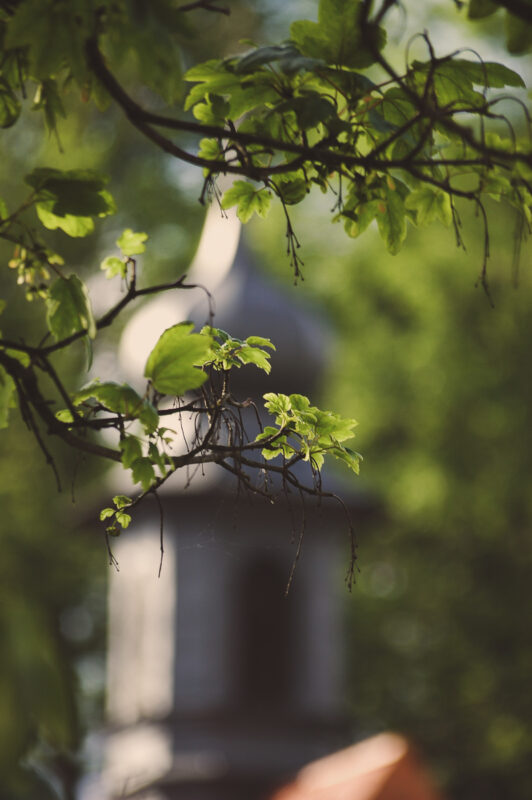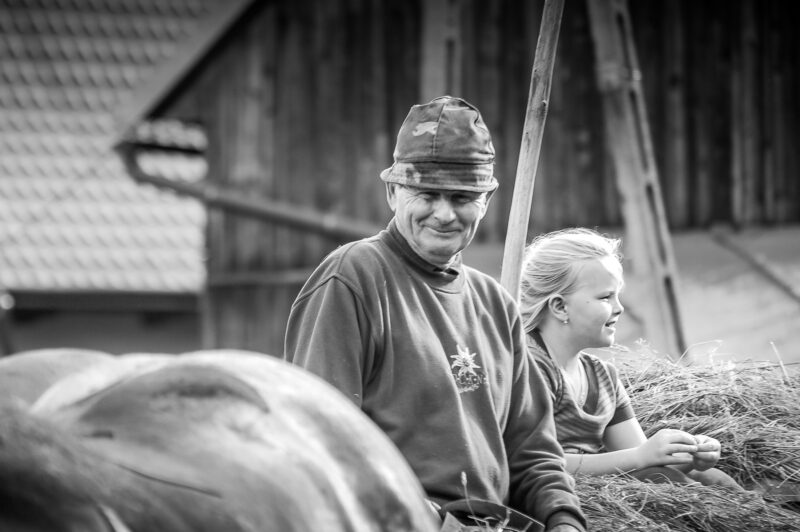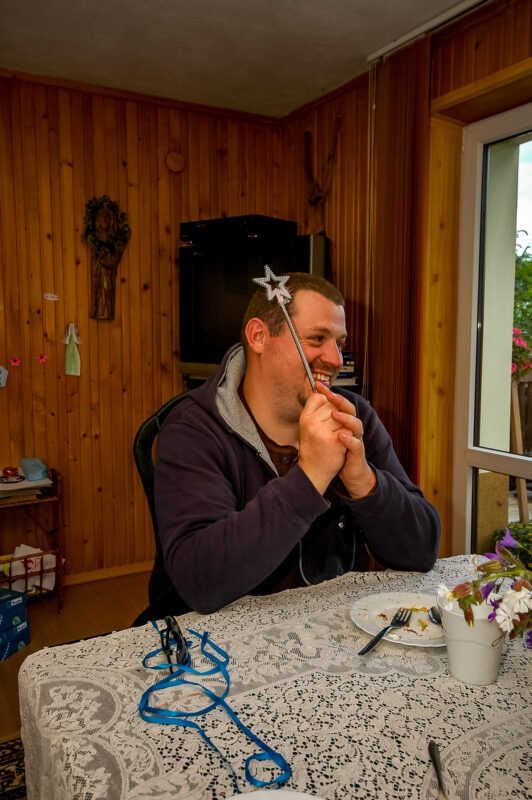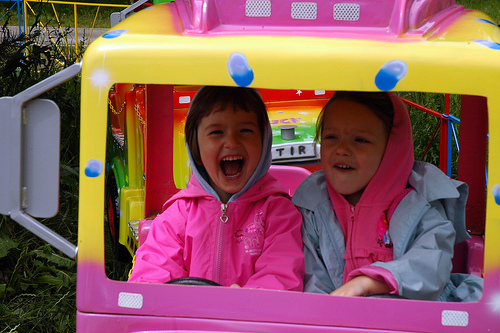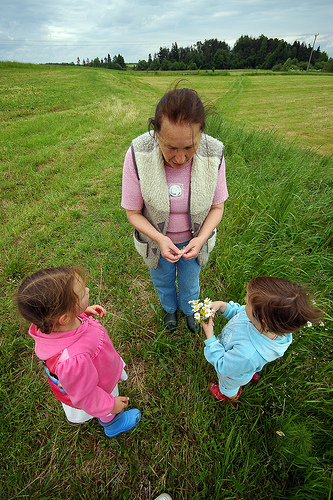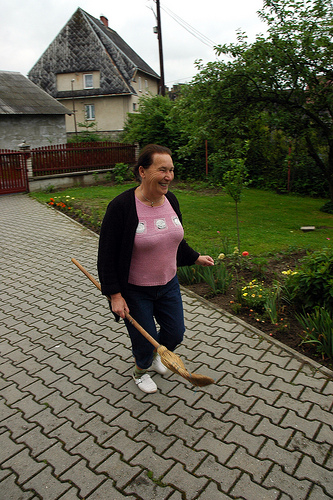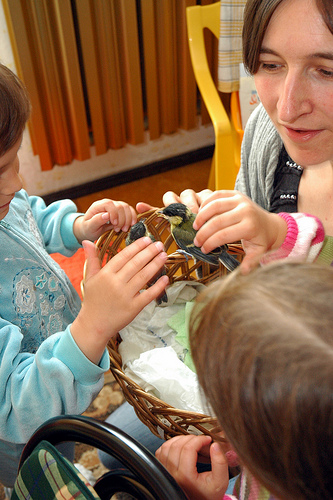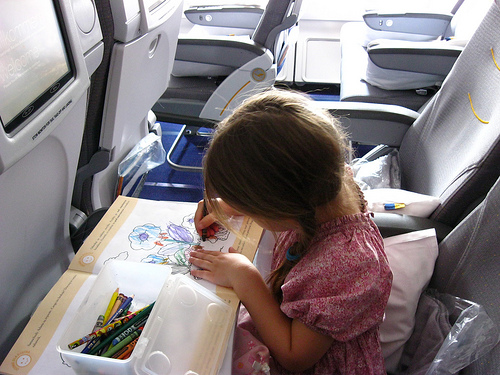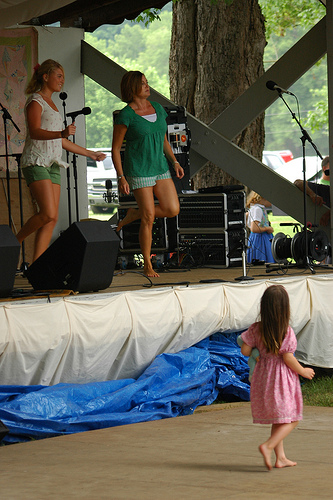Just a few kilometers outside Krakow and couple of hundred meters higher lies a small group of homes on top of a small hill that have earned the name G. Is it a town? I’m not sure. When preparing the GPS, I asked my father-in-law, “What street does D [K’s brother] live on?”
“There are no street names in G,” he laughs. “Only numbers.”
Such a small place that has no street names — sounds pleasant.
And a great place to spend the evening after a long day in Krakow. Family and a great view: what else could we want? Perhaps a little entertainment, and the sport of choice in Europe is soccer football.
The mutual opponent: W, who is K’s godson. He’s quite the footballer, and to be honest, both K and I have a hard time keeping up.
When I face off against him, I think in terms of basketball: every beginner has one or two moves he feels comfortable with and repeats. I watch W as we play, figure out his favorite moves (a fake to his right, my left, followed by a charge to his left). He makes the move again and again. I come to expect it. I charge him, hoping to force the move.
Sure enough, fake right, charge left. And every single time he fakes me out. I know it’s coming; I throw out a leg like I see the pros do on television, and he shoots right past me.
If I charge and unfairly use my size advantage, I occasionally catch up and manage to kick the ball out-of-bounds. It works a time or two, but I realize anew how footballers have to be in amazing condition: I’m tired within a few minutes, and panting shortly there after.
Finally, a new strategy: keep my distance and force him to shoot from afar. It works. Temporarily.
In the end, the views win: W goes in to play video games, and I give up panting, looking at the view from our improvised football pitch.
I go inside to find K reading classic English nursery rhymes to the kids. She translates them to Polish, but they just lose something — the rhyme, the rhythm just aren’t there. The same goes with translating nursery rhymes the other direction:
Once upon a time there lived a witch named Baba Jaga,
who lived in a house made of butter.
It just doesn’t sound as good as
Była sobie Baba Jaga
Miała chatkÄ™ z masła
Certainly part of it is cultural: in the original there’s no mention of “a witch named.” Everyone simply knows that Baba Jaga is a witch. Koniec. Kropka.
Before heading out, we gather everyone for a quick group family portrait,
and other with just the kids — something of a trick with the smallest.







